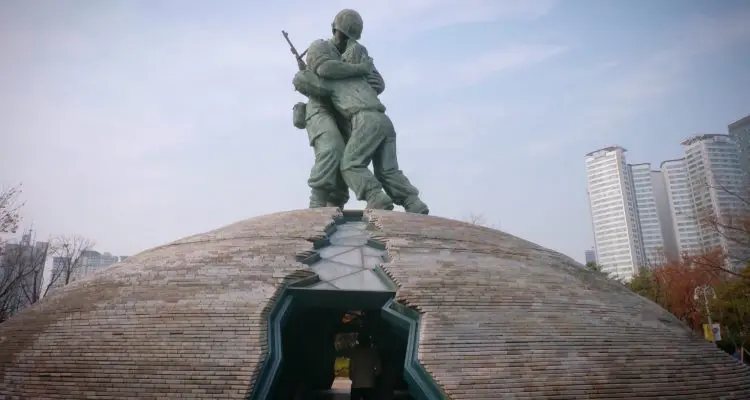War Memorial of Korea: A Journey Through History, Remembrance, and Reflection

The War Memorial of Korea stands as a powerful testament to the nation’s tumultuous past and a solemn tribute to the countless lives lost during various conflicts. Situated in Seoul, South Korea, this iconic memorial complex serves as a profound reminder of the sacrifices made by brave soldiers and civilians alike.
From its historical significance to its vast collection of artifacts, the War Memorial of Korea offers visitors a profound and introspective experience.
History
The War Memorial of Korea traces its roots back to the year 1990 when it was established to commemorate the military history of South Korea and honor the veterans who fought for their country’s independence and democracy.
Originally known as the “Victory Memorial Hall,” it underwent expansion and renovation over the years to become the remarkable institution it is today. The memorial serves as a symbol of remembrance, educating visitors about the Korean War, as well as other significant conflicts throughout the nation’s history.
Why Visit
Visiting the War Memorial of Korea is an opportunity to engage with South Korea’s rich heritage, pay homage to the fallen heroes, and gain valuable insights into the nation’s resilience. Whether you are a history enthusiast, a veteran, or simply seeking a thought-provoking experience, this memorial provides a profound and emotionally charged journey.
Location and Route
The War Memorial of Korea is conveniently located in Yongsan-gu, Seoul, making it easily accessible to both domestic and international visitors. Situated near Samgakji Station, it can be reached by various means of transportation, including subway, bus, or taxi.
Once inside the memorial, visitors can explore the expansive grounds, which are divided into different areas and exhibits. To make the most of your visit, it is recommended to follow a route that allows you to fully immerse yourself in the memorial’s diverse offerings. Start by entering the Main Building, which houses numerous galleries and exhibitions, before proceeding to the outdoor exhibition areas, which feature an array of military equipment and monuments.
When to Visit
The War Memorial of Korea is open throughout the year, except on Mondays and during national holidays. The memorial is particularly popular during significant dates such as Memorial Day (June 6th), Veterans Day (October 1st), and the anniversary of the Korean War Armistice (July 27th). However, due to the large number of visitors on these dates, it is advisable to plan your visit accordingly and be prepared for crowds. To avoid congestion, weekdays or early mornings on weekends are generally quieter times to explore the memorial.
What to See
The War Memorial of Korea offers a captivating array of exhibits and installations, each with its own significance and historical context. Here are some highlights of what you can expect to see during your visit:
1. Main Building
This imposing structure houses various halls and galleries, including the Memorial Hall, which pays tribute to fallen soldiers, and the Expeditionary Forces Room, which displays the history of Korean troops abroad.
2. Indoor Exhibitions
Explore galleries showcasing artifacts, photographs, and multimedia presentations that narrate the Korean War, the Cold War era, and the development of South Korea’s armed forces.
3. Outdoor Exhibitions
The vast outdoor area features an impressive collection of military equipment, including tanks, helicopters, fighter jets, and artillery pieces. It also encompasses monuments dedicated to significant events and figures in Korean military history.
4. Statue of Brothers
This iconic statue depicts two brothers, one from North Korea and the other from South Korea, embracing each other in a symbol of reconciliation and hope for reunification.
5. Memorial Hall of the Korean War
Step into the heart of the memorial, where you can gain a deeper understanding of the Korean War through interactive displays, dioramas, and personal testimonies.
Conclusion
A visit to the War Memorial of Korea is a journey that transcends time, inviting visitors to reflect on the sacrifices made and the indomitable spirit of the Korean people. Through its historical significance, immersive exhibitions, and powerful displays, the memorial provides a solemn and thought-provoking experience.
Whether you seek to learn about South Korea’s military history, pay homage to fallen heroes, or simply gain a deeper understanding of the nation, the War Memorial of Korea offers a profound and moving encounter that is sure to leave a lasting impression.






